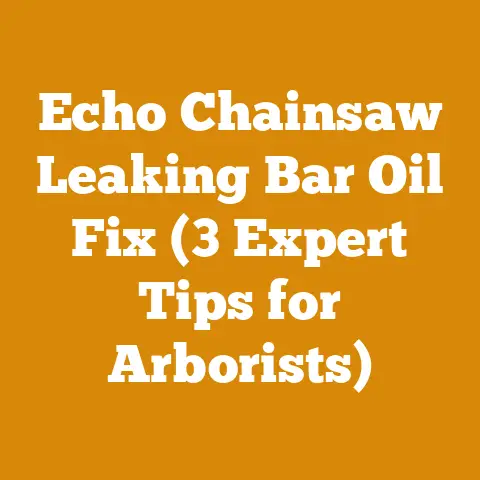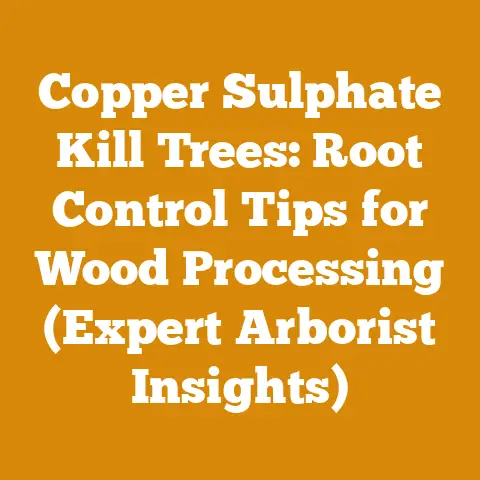Chimney Flue Extension Kit Guide (Masonry Wood Stove Tips)
“Ah, the hearth,” I murmur, picturing my grandfather stoking the flames in his old masonry stove, a ritual passed down through generations. Back then, extending a chimney was a matter of sheer ingenuity and elbow grease, not the sophisticated kits we have today. As I recall, he would often emphasize, “A good fire needs a good draw, and a good draw needs a proper flue.” That wisdom still rings true, even with all the advancements in wood-burning technology.
I’ve spent years tinkering with wood stoves, chopping wood, and wrestling with chimney issues, so I understand firsthand the importance of a well-functioning flue. It’s not just about getting rid of smoke; it’s about safety, efficiency, and the overall enjoyment of a cozy fire.
Key Takeaways You’ll Learn:
- Why Extend?: Understand the crucial reasons for extending your chimney flue, from improving draft to meeting safety regulations.
- Kit Components: Recognize the essential parts of a chimney flue extension kit and what to look for in terms of quality and compatibility.
- Selection Criteria: Learn how to choose the right kit based on your stove type, chimney dimensions, and local climate conditions.
- Installation Process: Get a step-by-step guide to safely and effectively installing your chimney flue extension kit, including essential safety precautions.
- Maintenance Tips: Discover how to maintain your extended flue to ensure optimal performance and longevity, preventing common issues like creosote buildup.
Understanding the Need for a Chimney Flue Extension
Let’s dive in. The chimney, often overlooked, is the unsung hero of any wood-burning stove system. It’s not just a decorative element; it’s a critical component that ensures the safe and efficient operation of your stove. But why would you need to extend it?
The Science of Draft
At its core, a chimney works by creating a “draft” – the upward flow of air that pulls smoke and combustion gases out of the stove and into the atmosphere. This draft is primarily driven by the difference in temperature between the hot gases inside the chimney and the cooler air outside. A taller chimney generally creates a stronger draft.
Data Point: Studies have shown that increasing chimney height by just a few feet can improve draft by as much as 20%, leading to more efficient combustion and less smoke spillage.
The Problems of Insufficient Height
When a chimney is too short, several problems can arise:
- Poor Draft: This is the most common issue. A weak draft can cause smoke to back up into your home, creating a smoky and potentially dangerous environment.
- Creosote Buildup: Incomplete combustion due to poor draft leads to increased creosote formation, a highly flammable substance that can cause chimney fires.
- Inefficient Burning: A weak draft hinders the stove’s ability to burn fuel efficiently, resulting in higher fuel consumption and lower heat output.
- Code Violations: Many building codes require chimneys to extend a certain distance above the roofline and nearby obstructions to ensure proper draft and safety.
Case Study: I once helped a friend who had installed a wood stove in his cabin. The chimney was just barely above the roofline, and he was constantly battling smoke issues. After extending the chimney by 4 feet, the difference was night and day. The stove burned cleaner, produced more heat, and the smoke problem vanished.
The “10-Foot Rule” and Other Considerations
Building codes often include specific guidelines for chimney height, such as the “10-foot rule.” This rule generally states that a chimney must extend at least 3 feet above the highest point where it passes through the roof and at least 2 feet higher than any portion of a building within 10 feet.
Expert Insight: According to the National Fire Protection Association (NFPA) 211 standard, proper chimney height is crucial for preventing backdrafting and ensuring adequate draft. Always consult local building codes and regulations before installing or modifying a chimney.
Understanding Chimney Flue Extension Kits
Now that we’ve established why chimney extension is important, let’s delve into the world of chimney flue extension kits. These kits provide a convenient and relatively straightforward way to increase the height of your chimney.
Components of a Typical Kit
A typical chimney flue extension kit includes:
- Flue Sections: These are the individual lengths of pipe that make up the extension. They are usually made of stainless steel or black stovepipe.
- Connectors: These are used to join the flue sections together and to connect the extension to the existing chimney. Common types include slip connectors, locking bands, and adapters.
- Support Brackets: These provide stability and support for the extension, especially for taller chimneys.
- Rain Cap: This prevents rain, snow, and debris from entering the chimney.
- Hardware: This includes screws, bolts, and other fasteners needed for assembly.
Types of Chimney Flue
- Single-Wall Flue: Single-wall flue pipes are typically used to connect the wood stove to the chimney. They are not suitable for use as a chimney extension, especially outdoors, due to rapid heat loss and creosote buildup.
- Double-Wall Flue: Double-wall flue pipes have two layers of metal with an air gap in between. This provides better insulation, reducing heat loss and creosote formation.
- Triple-Wall Insulated Flue: Triple-wall insulated flue pipes offer the best insulation, making them ideal for exterior chimney extensions. They minimize heat loss and creosote buildup, ensuring a strong draft and safe operation.
Personal Story: I once made the mistake of using single-wall stovepipe for a short chimney extension in my workshop. It quickly became a creosote magnet, and I had to clean it constantly. I learned my lesson and switched to a double-wall system, which made a huge difference.
Materials Matter: Choosing the Right Metal
The material of your chimney flue is crucial for its durability, safety, and performance.
- Stainless Steel: Stainless steel is the most common and generally recommended material for chimney flues. It is resistant to corrosion, durable, and can withstand high temperatures.
- Galvanized Steel: Galvanized steel is less expensive than stainless steel but is not as durable or corrosion-resistant. It is not recommended for use with wood-burning stoves.
- Black Stovepipe: Black stovepipe is typically used for the connector pipe between the wood stove and the chimney. It is not designed for exterior use and should not be used for chimney extensions.
Data Point: Studies have shown that stainless steel chimney flues can last 20 years or more with proper maintenance, while galvanized steel flues may only last 5-10 years.
Selecting the Right Chimney Flue Extension Kit
Choosing the right chimney flue extension kit can feel overwhelming, but by considering a few key factors, you can narrow down your options and find the perfect fit for your needs.
Measuring Your Existing Chimney
Before you can select a kit, you need to know the dimensions of your existing chimney. This includes:
- Diameter: Measure the inside diameter of the chimney flue. This is crucial for ensuring a proper fit.
- Height: Determine how much additional height you need to achieve the required draft and meet building codes.
- Type: Identify the type of chimney you have (e.g., masonry, metal, or factory-built). This will influence the type of extension kit you need.
Practical Tip: Use a chimney measuring tool or a flexible measuring tape to get accurate measurements. If you’re unsure, consult a professional chimney sweep.
Matching the Kit to Your Stove
The type of wood stove you have will also influence your choice of chimney flue extension kit.
- Wood Stove Size: A larger stove will require a larger diameter flue to handle the increased exhaust volume.
- Stove Collar Size: The extension kit must be compatible with the stove’s collar size (the opening where the flue connects).
- Stove Type: Some stoves require specific types of flue systems for optimal performance and safety.
Expert Insight: According to stove manufacturers, using the wrong size or type of flue can reduce stove efficiency by as much as 30% and increase the risk of chimney fires.
Considering Your Climate
The climate in your area can also play a role in your selection.
- Cold Climates: In colder climates, consider using a triple-wall insulated flue to minimize heat loss and creosote buildup.
- Windy Areas: In windy areas, make sure the extension kit is designed to withstand strong winds and consider using additional support brackets.
- Coastal Areas: In coastal areas, choose a stainless steel flue with a high level of corrosion resistance.
Personal Experience: I live in a region with harsh winters, and I’ve found that investing in a well-insulated chimney flue is worth every penny. It keeps my stove burning efficiently and reduces the amount of creosote I have to deal with.
Key Features to Look For
When evaluating chimney flue extension kits, consider these essential features:
- UL Listing: Look for a kit that is UL listed, meaning it has been tested and certified to meet safety standards.
- Warranty: A good warranty indicates the manufacturer’s confidence in the product’s quality and durability.
- Ease of Installation: Choose a kit that is designed for easy installation, with clear instructions and readily available support.
- Durability: Select a kit made from high-quality materials that will withstand the rigors of wood-burning and the elements.
Step-by-Step Installation Guide
Now that you’ve chosen the right chimney flue extension kit, it’s time to get to work. Here’s a step-by-step guide to help you through the installation process.
Disclaimer: Chimney work can be dangerous. If you’re not comfortable working at heights or with tools, it’s best to hire a professional.
Safety First
Before you start, take these safety precautions:
- Wear appropriate safety gear: This includes gloves, eye protection, and a dust mask.
- Work on a stable surface: Use a sturdy ladder or scaffolding.
- Disconnect the stove: Make sure the stove is cool and disconnected from the flue.
- Have a helper: It’s always a good idea to have someone assist you, especially when working at heights.
Step 1: Preparing the Existing Chimney
- Clean the chimney: Remove any creosote or debris from the existing chimney flue.
- Inspect the chimney: Check for any damage or deterioration. Repair or replace any damaged sections before proceeding.
- Prepare the connection point: Ensure the connection point is clean and free of obstructions.
Step 2: Assembling the Extension Kit
- Read the instructions: Familiarize yourself with the manufacturer’s instructions.
- Lay out the components: Organize the flue sections, connectors, and hardware.
- Assemble the flue sections: Connect the flue sections together according to the instructions.
Step 3: Connecting the Extension to the Chimney
- Apply sealant: Apply a high-temperature sealant to the connection point.
- Attach the extension: Carefully lift the extension and connect it to the existing chimney.
- Secure the connection: Use the appropriate connectors (e.g., slip connectors, locking bands) to secure the connection.
Step 4: Installing Support Brackets
- Determine bracket placement: Follow the manufacturer’s instructions for bracket placement.
- Attach the brackets: Secure the brackets to the chimney and the extension using screws or bolts.
- Ensure stability: Make sure the extension is stable and properly supported.
Step 5: Installing the Rain Cap
- Attach the rain cap: Secure the rain cap to the top of the extension.
- Ensure a tight fit: Make sure the rain cap is properly sealed to prevent water from entering the chimney.
Step 6: Final Inspection
- Check all connections: Verify that all connections are secure and properly sealed.
- Inspect for leaks: Look for any gaps or cracks that could allow smoke or water to escape.
- Test the draft: Light a small fire in the stove and check the draft.
Expert Quote: According to chimney experts, a properly installed chimney flue extension should create a strong, consistent draft and prevent smoke from backing up into the home.
Maintaining Your Chimney Flue Extension
Once your chimney flue extension is installed, it’s essential to maintain it properly to ensure optimal performance and safety.
Regular Inspections
- Visual inspections: Inspect the chimney regularly for any signs of damage, corrosion, or creosote buildup.
- Professional inspections: Have your chimney professionally inspected at least once a year.
Cleaning
- Creosote removal: Clean the chimney regularly to remove creosote buildup. This can be done with a chimney brush or by hiring a professional chimney sweep.
- Debris removal: Remove any debris, such as leaves or bird nests, that may have accumulated in the chimney.
Data Point: According to the Chimney Safety Institute of America (CSIA), failure to clean and maintain a chimney is the leading cause of chimney fires.
Repairs
- Address damage promptly: Repair any damage to the chimney flue extension as soon as possible.
- Replace worn components: Replace any worn or damaged components, such as connectors or rain caps.
Personal Tip: I always keep a spare rain cap and a few extra connectors on hand, just in case.
Preventing Creosote Buildup
- Burn dry wood: Use only seasoned wood with a moisture content of less than 20%.
- Burn hot fires: Burn hot fires to promote complete combustion and reduce creosote formation.
- Avoid smoldering fires: Avoid smoldering fires, as they produce more smoke and creosote.
Actionable Conclusion:
Extending your chimney flue is a worthwhile investment in the safety and efficiency of your wood-burning stove. By understanding the principles of draft, choosing the right kit, and following proper installation and maintenance procedures, you can enjoy a warm and cozy home without the worry of smoke problems or chimney fires. So, roll up your sleeves, gather your tools, and get ready to take your wood-burning experience to the next level. And remember, when in doubt, consult a professional.






